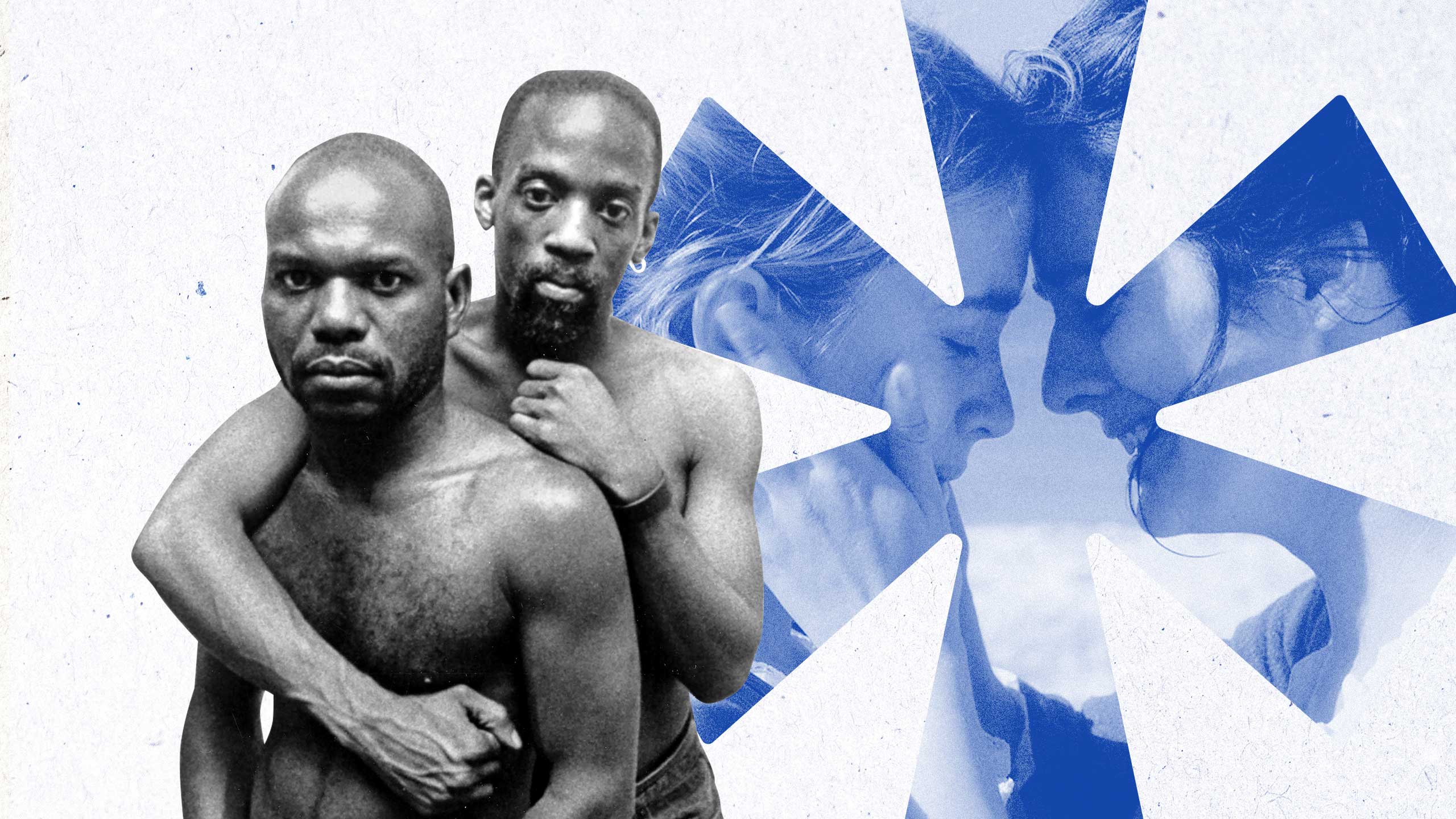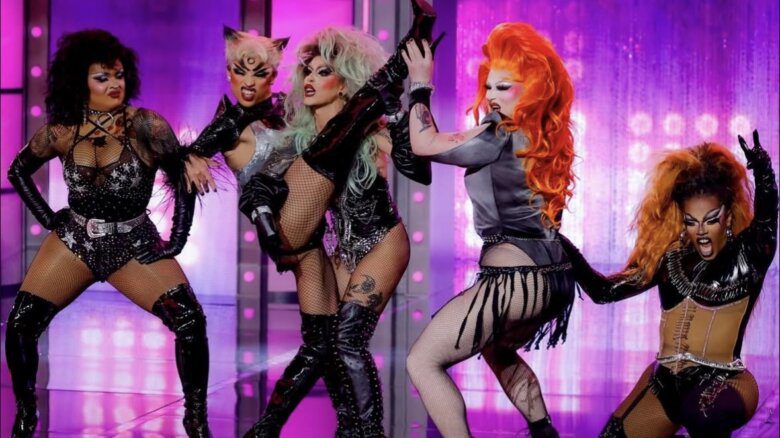Hello dear readers! This is Morgan Lightle, one of Xtra’s summer interns and an aspiring journalist in Toronto about to finish J-school at Centennial College. When I’m not working on the newsletter blurbs you’ve been reading this summer, you can find me biking around the city trying to get over my lockdown anxieties or sitting at home watching lots of old TV (The Nanny, early RuPaul’s Drag Race and The Muppet Show).

Xtra’s benevolent rulers surrendered control of “Topline” this week, so I’m going to tell you all about what’s been on my mind while interning at this lovely queer institution. If you haven’t yet, subscribe to our newsletter Xtra Weekly, where you’ll find the most sensational and inspirational and celebrational queer news.
What’s the buzz 🐝?
Aside from dating, this Xtra internship is the first time I’ve communed with the LGBTQ2S+ community. I grew up in rural Ontario’s Grey and Dufferin Counties, away from any queer havens and with little knowledge about anything gay. When I finally came out, I’d left my undergrad campus and moved around so much that I missed opportunities to form new friendships before distance, busyness and adulthood stresses dominated. I had a supportive family and caring straight friends, but yearned to find people who’d get me, people I could talk to without having to explain or silence myself.
My cool aunt had lived in Toronto for years and regaled me with tales of drag queens, parties and concerts, so I set my eyes on the city. Riding the subway in early March 2020, I felt the exciting vibration that this was it. Toronto had the crowded euphoria of Pride, gay and drag bars—that mythologized image of urban queer liberation I hadn’t experienced and aspired to become part of. I’d found my home, and knew my queer community was here. I believed that come fall 2020, the next stage of my life would begin.
Then the pandemic happened, and the city’s queer community shuttered itself indoors.
COVID-19 felt like the perfect punishment for aspiring to overcome my lifelong shyness. I moved to Toronto last year, but I’ve had to spend most of my time alone in my basement apartment. I took Zoom classes, bided my time and mourned the community I hadn’t had a chance to lose.
Reflecting on those long, locked-down months, I realized I had queer community in one of the first places I found it: the movies I watched.
What were we thinking 🎞️?
The last movie I saw in theatres before the pandemic was Portrait of a Lady on Fire. Set in late 18th-century France, the film follows an artist named Marianne tasked with painting a wedding portrait for unwilling subject Héloïse and their ensuing love affair. I’d read ecstatic reviews, and since I liked Céline Sciamma’s other movies, I knew I needed to see it in theatres. I was left tearful and shell-shocked by the ending of the film, which leaves viewers with a series of heartbreaking signs that Marianne and Héloïse continue loving each other despite being forever apart. For me, the ending was so powerful in part because it shows how marginalized passions lie hidden in plain sight. Marianne and Héloïse use their love of painting as a form of comfort and empowerment, and that empowering comfort endures for queer audiences who know where to look. There could be thousands upon thousands of “page 28s” lurking through art history, unnoticed yet eternal.
After Portrait of a Lady on Fire, my desire to watch more queer cinema exploded. Luckily, LGBTQ2S+ people have put their experiences on film for decades, so there’s a long backlog of queer movies to get through. The one good thing about the pandemic was that it gave me time to make a big dent in my watchlist.
Watching older movies is a way to experience queer history being born and to give it an emotional life. I not only now connect to and understand past generations of queer people and what they’ve overcome, but am able to fit the contemporary world (and myself) into the queer community’s all-encompassing story.
Take the 1984 documentary The Times of Harvey Milk. The first openly gay politician elected in California history, Harvey Milk, a member of San Francisco’s Board of Supervisors, spearheaded the passage of a bill banning LGBTQ2S+ discrimination before his assassination in 1978. The Times of Harvey Milk focuses on queer visibility and its relationship with acceptance and powerbroking from straight society. In the movie, Milk puts on a suit and sports a short haircut in order to look acceptable to straight voters. This resonated with me—I often stress about opening up about my sexuality in class, and I hesitate to show too much of my upper thigh when I go outside in short shorts.
Milk’s message on the revolutionary power of coming out remains effective, and gains new dimensions with today’s increased visibility for trans and non-binary people. When Milk’s friends and allies speak about that message in The Times of Harvey Milk—all of them visibly grieving his assassination a mere six years prior—they speak to the enormity of Milk’s loss. When the documentary describes assassin Dan White’s twinkie defense, his easy jail sentence and the White Night riots, I felt profound grief and rage at the injustice done to Milk and the ongoing oppression of marginalized people.
I didn’t grow up during the AIDS epidemic, but the fear and anger engendered during that time remain accessible and understandable through movies like Tongues Untied (1989), Poison (1991) and The Living End (1992). These films are unforgiving in their horror yet inspiring in their defiance, refusing to be silent in the face of ignorance and death. They empower through their raging assertions that queer people have a right to life in all our difference.
Of course, empowerment can also be found in movies of absolute queer happiness: there’s the rollicking drag queen comedy The Adventures of Priscilla, Queen of the Desert (1994), the colourfully campy conversion therapy satire But I’m a Cheerleader (1999) and the glam rock extravanganza Velvet Goldmine (1998). They’re all about the pleasures of queerness—whether that’s solidarity and friendship, love and desire or finding oneself in transgressive art.
These movies make me happy to be gay. For as long as they’re playing, I feel like I belong to something defiant and pleasurable, not sitting by myself dreaming of being around real people.
I’m definitely not alone in this experience. In Velvet Goldmine, there’s a seemingly autobiographical moment from director Todd Haynes: upon discovering adrogynous glam-rocker Brian Slade performing on TV, teenager Arthur (Christian Bale) excitedly proclaims “That’s me!” to his baffled parents. To my jubilant surprise, I nearly exclaimed the same thing watching this scene alone in my basement apartment.
It’s great to commune with queer filmmakers and audiences through the shared experience of film, and it gives me hope. There are countless people out there like Arthur and myself, and maybe once the pandemic is manageable (and if I’m lucky), I’ll be with one of you at a screening someday.
For now, the fact that these movies make me yearn for community makes me part of that community.
In other Xtra news 🌎
👉Jill Andrew is the first Black, openly queer MPP in Ontario. She spoke with Xtra about the Ontario NDP Black Caucus, rebuilding communities affected by the pandemic and the provincial election.
👉Casey Plett has done it again with her new collection of short stories, A Dream of a Woman. Niko Stratis talks to the author about writing about trans lives.
👉In The L Word Generation Q’s Bette-Gigi love ring, a new fighter emerges: Dani. Xtra’s Erica Lenti and Chelle Turingan make sense of this love triangle in this week’s episode of our Off the Chart podcast.
👉A reader has happily transitioned, but as a young gay man, he is intimidated by cis men—especially in queer spaces. Kai Cheng Thom shares some advice in the latest “Ask Kai.”
👉Want more headlines? Subscribe to Xtra Weekly.
Gifbox
My heart watching queer cinema:



 Why you can trust Xtra
Why you can trust Xtra


